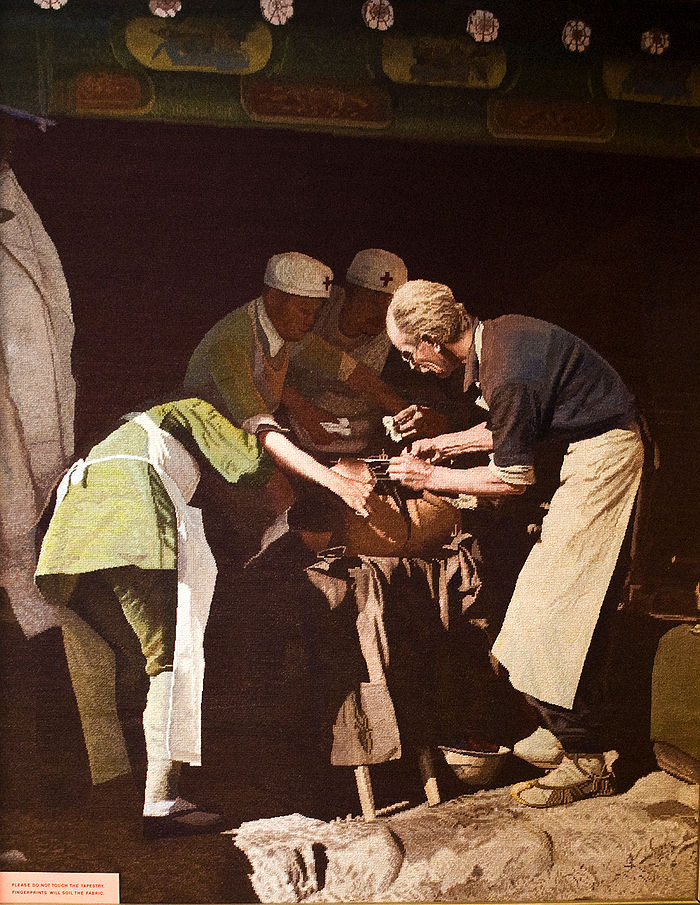History of the Tapestry by William C. Gibson, MD, DPhil.
 |
One day when I had just arrived back in Vancouver from World Health Organization meetings in Geneva I dropped in to see H.R. MacMillan at his home. As usual he began: "What is the best thing you saw while away?" I told him of a very fine tapestry which was in a travelling exhibition, showing Norman Bethune in the Chinese countryside. "Find it," he said.
After months of correspondence with Chinese and Geneva sources, I had to report failure. So H.R. said: "Get one made in China and send me the bill." So I sent off to Shanghai a colour photo to be reproduced, giving the approximate size which we could accommodate.
Six months later the Bethune tapestry arrived, almost buried in mothballs! We placed it in the Sherrington Room, where many came to study it.*
The setting depicts a former Buddhist temple, which Bethune had converted to his operating room for the Eighth Route Army in Hopei Province in the north.
Bethune had sailed on a CPR Empress liner from Vancouver soon after Japan attacked China, because he was at that time in Salmon Arm, B.C. on a fundraising mission for his blood transfusion service in the Spanish Civil War. On hearing of the invasion of China, he gave up his efforts for Spain, where he had done yeoman service for the legal government of Spain despite the Department of External Affairs in Ottawa, which threw no end of roadblocks in his way.
With a Canadian nurse he set off for China, accompanied, alas, by an American Red Cross surgeon who turned out to be a chronic alcoholic (as I believe he had been in Newfoundland). In 18 months Bethune became a legend. After his death at age 49 of an infected finger, cut while operating, Mao wrote a eulogy which was memorized by every schoolchild in China. When I first visited China in 1973, with the Bethune Foundation, every stop we made was highlighted by children reciting it.
- One visitor was Dr. Wong, who was Bethune's anesthetist, shown in the tapestry. Bethune is doing a rib resection to get at a lung damaged by a bullet. You can see him bending over the wedged-open chest of the soldier.
|